Latrodectus, the black widow spider is one of the most famed and feared spider genera in the world. Hollywood tends to use only one kind of Black Widow in its films. It is always shown as a shiny black spider with a red hourglass on the dorsal side of its abdomen. However, this is not exactly the only species of the Black Widow that is out there. In the United States, five species of Black Widows can be found: the Southern Black Widow, the Northern Black Widow, the Western Black Widow, the Brown Widow and the Red Widow. While the brown widow and the red widow have a less potent venom, the three species of the black widow in the United States can have serious medical effects for humans. In this article, we are looking specifically at the Northern black widow. Despite its name, this species can be found throughout the Eastern part of the United States – from Texas to Florida up to Michigan and Maine.
Description of the Northern Black Widow
In the Northern Black Widow, the female, male, and immature spider all look different. A young northern widow, has red markings down the back of the abdomen, as well as white and yellow stripes on the sides. Since the range of the Northern black widow overlaps with the closely related Southern black widow, these two species are often confused. The best way to identify the species of a female is by looking at the hourglass shape. In female northern black widows, the hourglass is usually divided into two triangles while the two parts of the hourglass of the southern black widow (as well as the western black widow) are joined together.
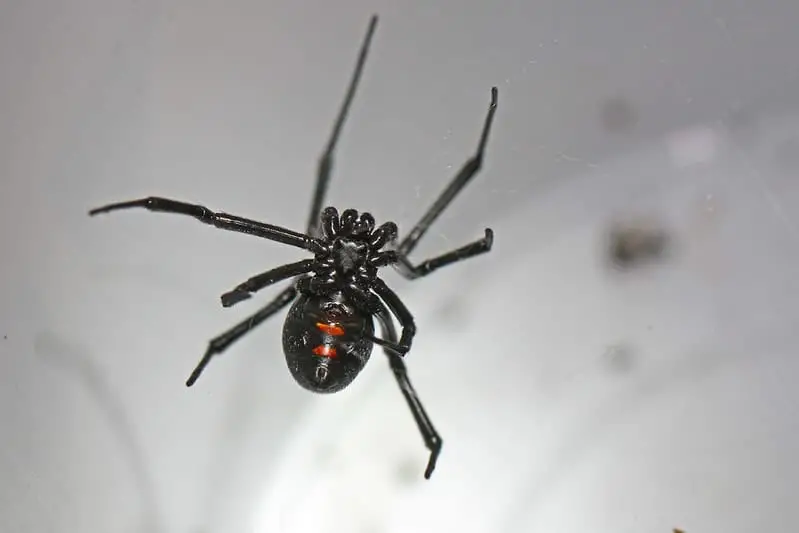
As they reach adulthood, the male Northern Widows will keep those markings, but it will stop eating and live with only one purpose: to mate. As it wanders, looking for a mate, the abdomen will shrink. The adult female, will lose the white and yellow markings on the side for the most part. In some cases, they will retain some markings, but for the majority, they will only retain the red spots down the back.
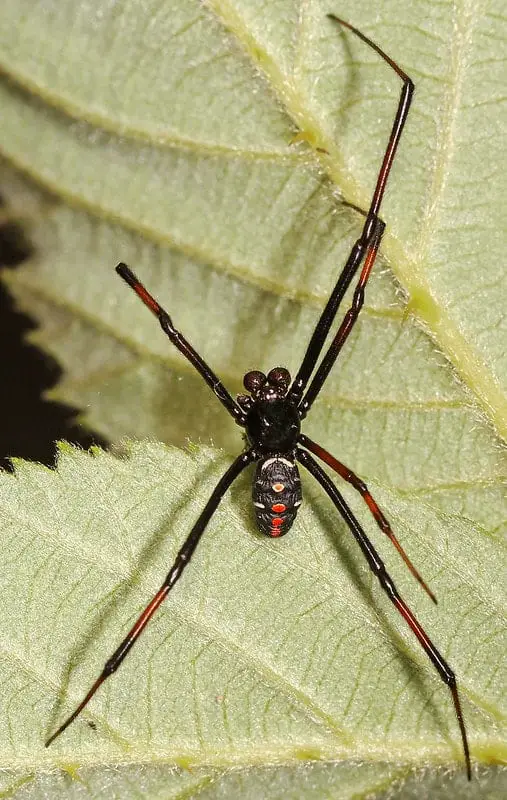
All three species of the black widow in North America are often confused with the Steatoda grossa spider, also called the false black widow.
Size
The body in an adult female black widow is about half an inch (13 mm) from front to back. Including the legs, the adult female black widow can be about 1.5 inches (38 mm).
Web
The web of the black widow is very erratic and tangled looking. The spider will often hang upside down in the web and wait for an insect to get caught up in the web. In this position, it is possible to see the red hourglass marking on the underside of its abdomen.
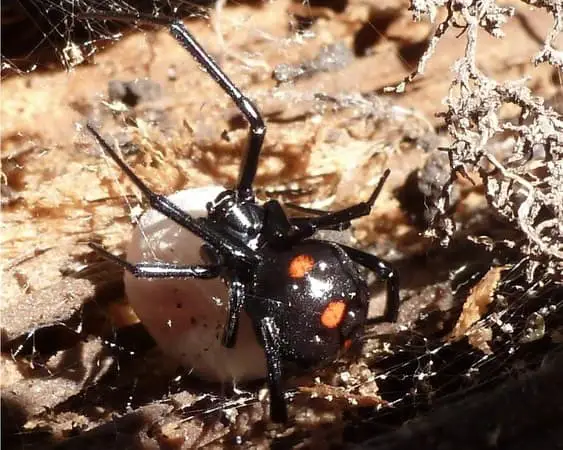
Northern Black Widow Bite
As the other spiders from this genus, Northern Black Widows are not aggressive spiders. But on occasion, they will bite. Especially if they are defending themselves or their egg sac.
Even though the Black Widow is the most venomous spider in the United States, only a very small amount of its bites will result in death. Young children and elderly adults are most at risk of fatality if the bite injects its venom.
Only female black widow spiders are strong enough to bite through human skin and inject their venom.
Often, a black widow can bite without actually injecting any venom, leaving its bite harmless. However, if after being bitten, the victim begins feeling muscle cramps or abdominal pain, they should go to a hospital. Hospitals have medicines to counter the venom of the Southern black widows. However, there is currently no antitoxin available for bits of the Northern Black Widow.
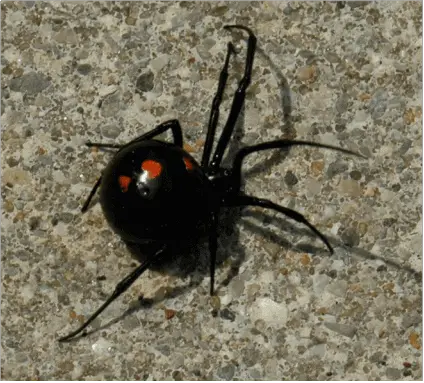
The bite of a Northern Widow might only feel like a pinprick at first. There may be local swelling and at some point intense pain in the limbs, chest and muscles as well as tremors, labored breathing, nausea, profuse perspiration, vomiting, cold and clammy skin and a weak pulse. The victim may become unconscious and convulsions may occur.
Range of the Northern Black Widow in the United States
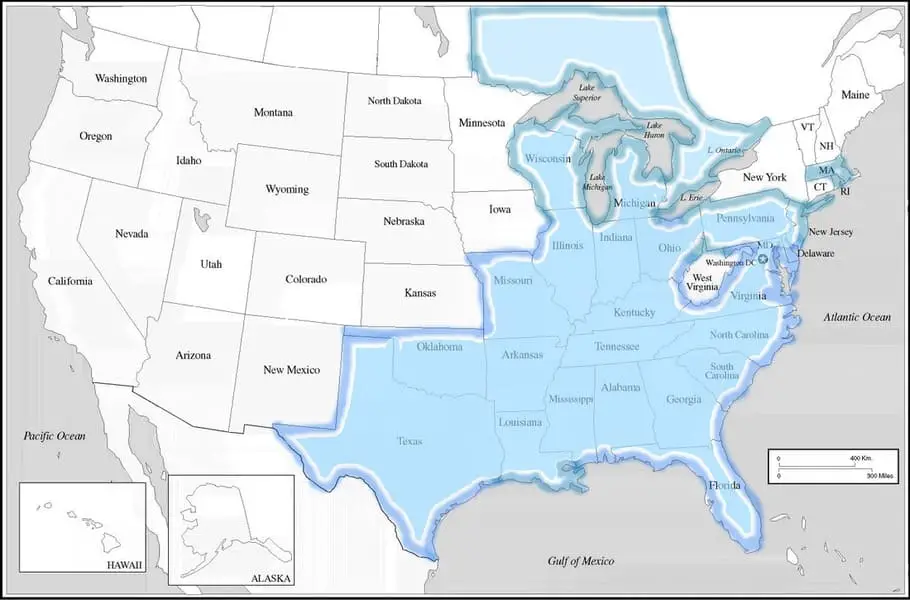
Even though its name suggests that the Northern Black Widow can only be found in the Northern States of the US, this is not true. The range of the Northern Black Widow spans over the same area as the range of the Southern black widow but it also stretches further up north to Michigan, Wisconsin and also Massachusetts.
The Northern Black Widow can be found in the following states: Texas, Oklahoma, Louisiana, Arkansas, Missouri, Illinois, Mississippi, Tennessee, Kentucky, Ohio, Pennsylvania, Alabama, Florida, Georgia, South Carolina, North Carolina, Virginia, Maryland, Delaware, New Jersey, Massachusetts, Rhode Island, Michigan, Wisconsin. Sometimes, species are also found in areas of New York Connecticut, New Hampshire and Maine.
Scientific Classification of Latrodectus variolus
- Kingdom: Animalia
- Phylum: Arthropoda
- Subphylum: Chelicerata
- Class: Arachnida
- Order: Araneae
- Infraorder: Araneomorphae
- Family: Theridiidae
- Genus: Latrodectus
- Species: Latrodectus variolus

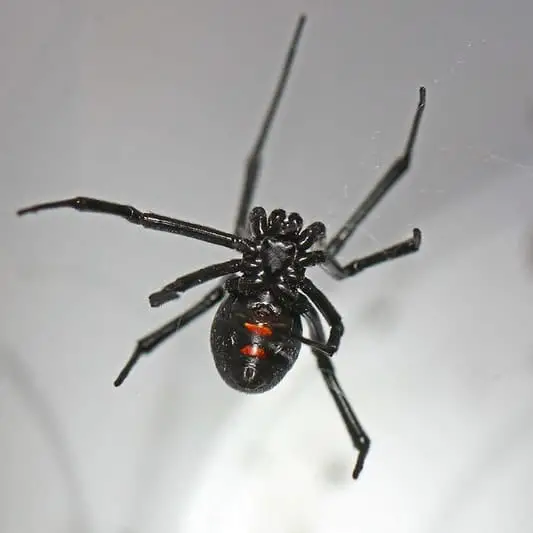
Saw this guy making a web in my kitchen. Watched him for a bit but was told to GET HIM OUT OF HERE lol. I’d say it’s body was just about the size of a penny or maybe a nickel, and with its legs about the size of a quarter. It’s my best guess anyway. Oh yeah and it had these big round eyes kinda kool.
Hello Joel, thanks for getting in touch! This is a male black widow. A location is necessary to determine the exact species. If you are located in the Northeastern U.S., this is a northern black widow male (Latrodectus variolus). If you are located in the southeast, it’s a southern black widow (Latrodectus mactans), in the Western U.S., it would be a western black widow (Latrodectus hesperus). Males are not generally considered medically significant, as they deliver a smaller amount of venom with a bite.
I’d still recommend handling this one carefully and keep an eye out for potential females. At this time of the year, males are often out alone in search for a female – so this fellow might not have a female anywhere close by.
In north central MA. Found this odd one today. Very glossy. No noticeable hourglass. Maybe even a trace of a grayish center line on back of abdomen and maybe even a line on each side running the length. Any ideas on what this is?
Looks black widow “like” but no hourglass visible. Grabbed a couple pics this one has my nail in the shot for a general scale.
NE Oklahoma: Is this a Northern Black Widow? First time ever seeing one with red on back vs underside of abdomen.
Hi Crystal, this is definitely a female black widow. Given your location, most likely a northern black widow, possibly but less likely a southern black widow (Latrodectus mactans).
Is anyone able to identify this one? It fell on my leg as I was sitting on the porch 😱 I am in central Virginia. I’d say it was about 3/4 inch long with black and brown legs.
Found this spider hanging in our garage. Wanted to teach my kids a biology lesson but had a hard time figuring out if it really is a black widow due to the white stripes. I’m based in Southern California.
Found on our living room ceiling, Long Island NY
Hi Ghost1917, this is a male northern black widow (Latrodectus variolus): https://usaspiders.com/latrodectus-variolus-northern-black-widow/
The females are considered medically significant and should be handled with care!
Almost sat on this guy in Wildwood, NJ, right by the shore. Brushed him off the park bench & realized he was already dead. Northern male black widow?
inbound1295892734638703663
Hey just want to update location. Found this one in Boise, Idaho
So, for many years I have been seeing these shiny black spiders in our water boxes where I work at a water district. I had someone tell me recently that they are black widows. I didn’t believe this person, as they have no markings. but after looking at several pictures, I cannot tell the difference between a real black widow, or these spiders at work. There are thousands and thousands of them, and they are guaranteed to be present in every water box I have. App 3000 boxes. I have been working around them for 20 years. They are not aggressive. Never been bit. Probably had them on me on more than one occasion. Dig these boxes up all the time. I think this week I will have a better look at the underside of one of these.
New Jersey, found in the folds of my gazebo curtains while putting them away in November
That’s a very big similarity came home from Atlantic City and a small thick black spider was bigger than a normal spider and it was very fast